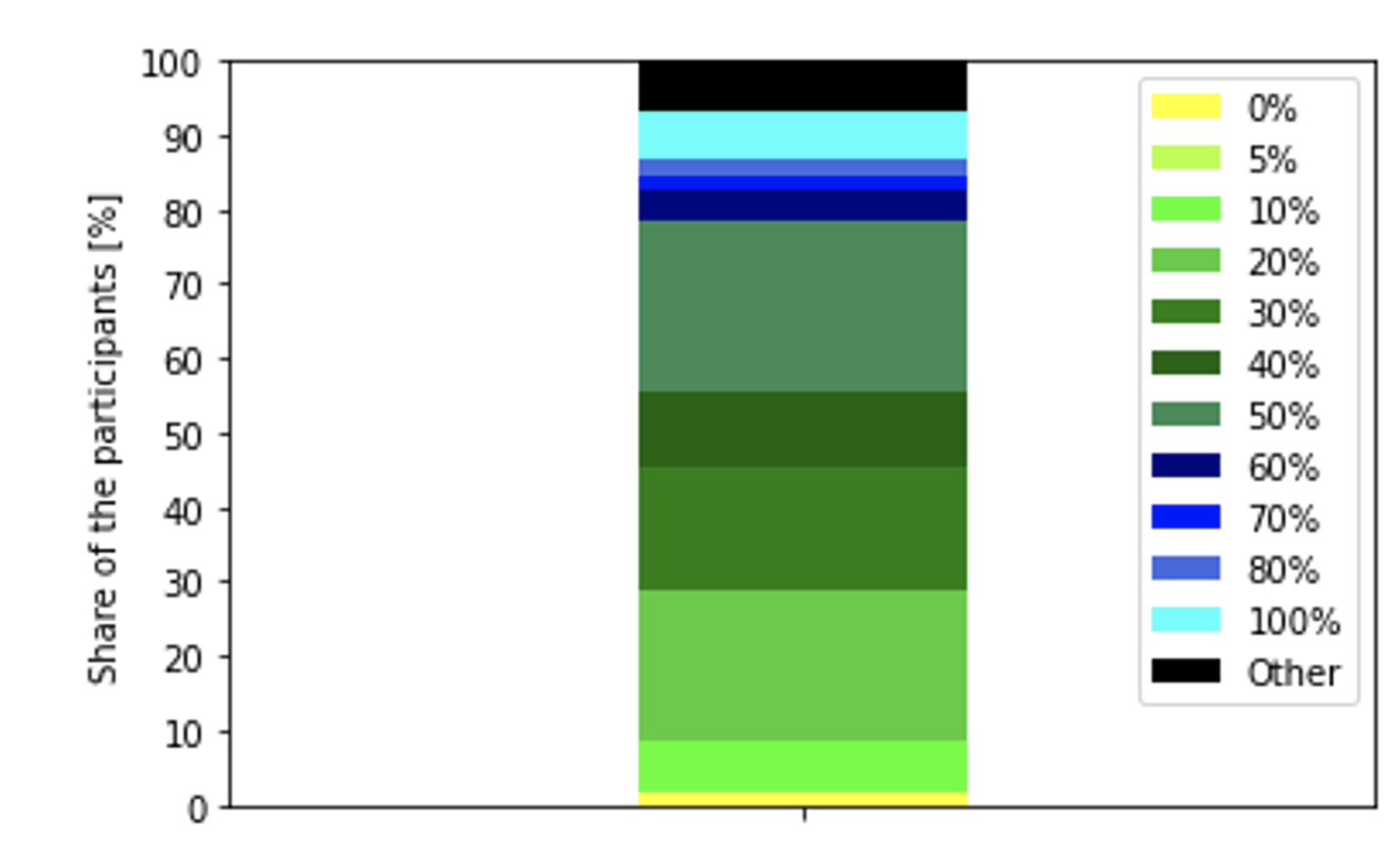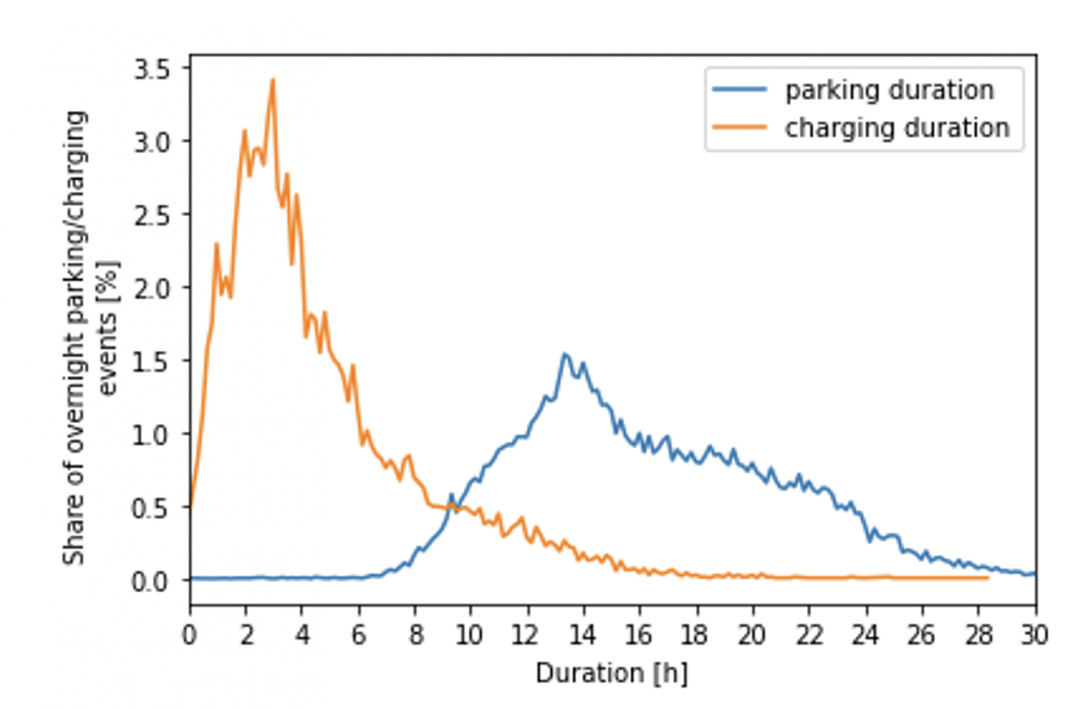Filip Johnsson, Maria Taljegard and Yuki Kobayashi from Chalmers University of Technology, investigate the smart charging of electric vehicles, specifically GPS logging of driving and charging patterns
To limit global warming in line with the Paris Agreement, electrification of the transport sector is crucial. Electrification must be accompanied by simultaneous decarbonisation of the electricity generation system. The good news is that there has been a strong expansion of renewable electricity in many countries, such as the EU Member States and the UK.
There has also been a substantial expansion of the use of electric vehicles (EVs), although they still represent a small share of the total car fleet. As of the end of January 2024, there were around 1,000,000 fully electric cars on UK roads, along with 600,000 plug-in hybrid cars.

UK and EU: Steep increase in electric vehicles share
The registration of new EVs in the EU is growing, with 21.6% of new car registrations being EVs in 2022, reaching a total of close to 2 million EV registrations in one year. At the same time, wind and solar power generation is steadily increasing and now stands for around 20% of electricity generation in the EU.
In mid-2023, the EU fossil fuel share of electricity generation was 33%, which is the lowest since the 1990s, but which is also a result of reduced demand due to high electricity and gas prices following Russia’s war on Ukraine. In Year 2023, UK non-fossil electricity generation provided 51% of the electricity used, compared to 32% for gas and 1% for coal.
Thus, both the UK and EU are on a pathway to a decarbonised electricity system. However, several challenges remain, given that electrification is also a main option for decarbonising the industry and heating sectors.
A substantial share of non-fossil electricity generation is in the form of wind and solar power. This share of non-dispatchable electricity generation is expected to increase, while the penetration of new nuclear power has evolved slowly, despite ongoing projects in Finland, the UK and France.
Irrespective of the future of nuclear power, a high share of non-dispatchable electricity generation can be expected, which means that the demand side must become more flexible.
Therefore, it is essential to investigate the extent to which an electrified car fleet can act flexibly, i.e., how smart charging strategies can be implemented. Thus, there is a need to understand the charging requirements for EVs better and estimate the value of smart charging strategies, including Vehicle to Grid (V2G), to allow for a more precise grid analysis.
Estimating the potential and possible benefits of V2G will require knowledge regarding EVs’ driving and charging patterns, as well as a clear understanding of the attitudes of owners towards smart charging of electric vehicles, including V2G.
We research how EVs can be efficiently integrated into the electricity system. In addition, the number of EVs in Sweden has increased dramatically over the last few years, from around 9,000 in 2016 to 212,072 in 2022 (SCB, 2022). Thus, Sweden is a relevant test case for understanding the potential for smart charging of electric vehicles.
GPS logging of Swedish EVs
In an ongoing research project, we have logged data on the driving patterns of EVs in Sweden and conducted a survey on the owners of the same EVs, with the purpose of obtaining information regarding the context of their ownership and their willingness to take part in smart charging of electric vehicles. The GPS logging was applied to around 200 randomly selected EVs distributed across Sweden with onboard GPS equipment plugged into their OBD port.
Figure 1 shows that the typical charging duration (around three hours) is much shorter than the average parking duration (about 14 hours). Thus, there is a significant potential for flexibility concerning charging time, i.e., allowing for shifting the start of charging from the time of arrival at home to later in the night when electricity prices are typically lower than during daytime and the afternoon peak hours.
From one of the survey questions, 79% of the EV owners stated that they would accept a reduction of the State of Charge (SOC) of the battery to 50% or lower when participating in a smart charging of electric vehicles programme involving V2G (Figure 2). Yet, around half of the EV owners expected significant economic compensation for any battery degradation linked to participating in a V2G scheme.
Strong potential for short-term grid services from EVs
Overall, we conclude there is strong potential for EV charging involvement in various flexibility measures to help stabilise the grid, particularly for short-term grid services. This is a promising development because the total battery capacity of an electrified transportation sector is large.
For example, assuming that 10 kWh from the current 1,000,000 UK EVs will be available for short-term balancing of the grid, this will correspond to 10 GWh that could be dispatched over a few hours per day. This can be compared with a large nuclear power plant reactor, which typically has an installed capacity of 1.5 GW.
References
Kobayashi, Y., Taljegard, M., Johnsson, F., The potential for V2G – logging of EV driving and charging patterns in Sweden, work in preparation, 2024.
SCB, Statistics Sweden, 2022.

This work is licensed under Creative Commons Attribution-NonCommercial-NoDerivatives 4.0 International.


